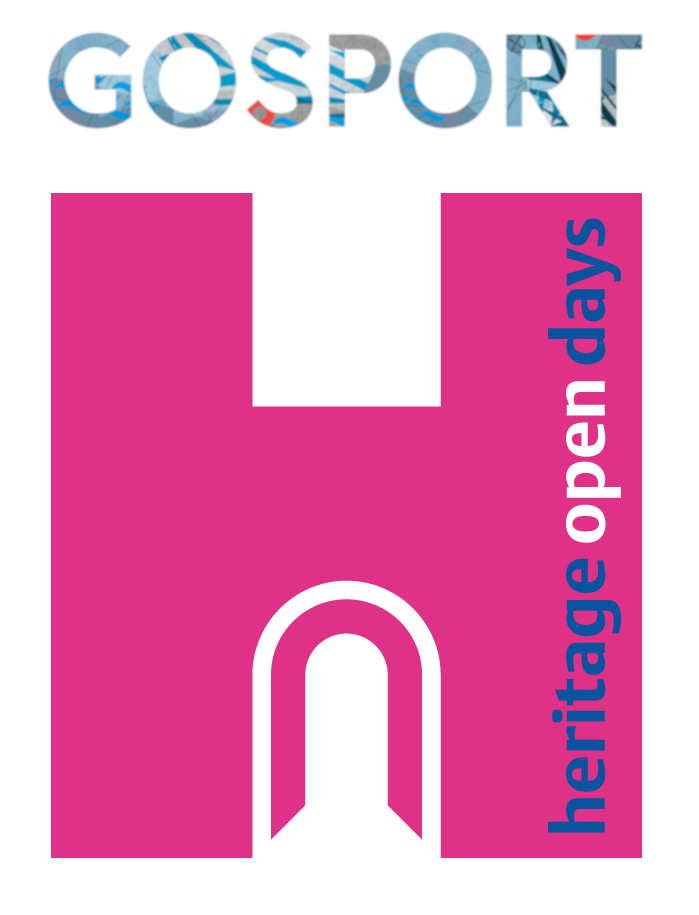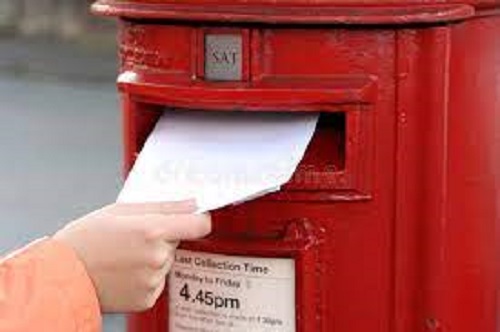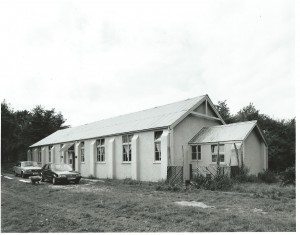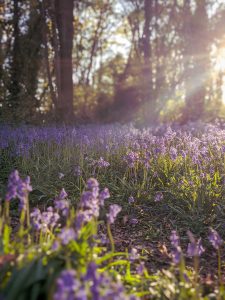We start our tour at the Nat Gonella Memorial at the corner of Gordon Road and Bury Road. A short walk from here we reach our first box in the wall of number 32
Bury Road, Gosport.
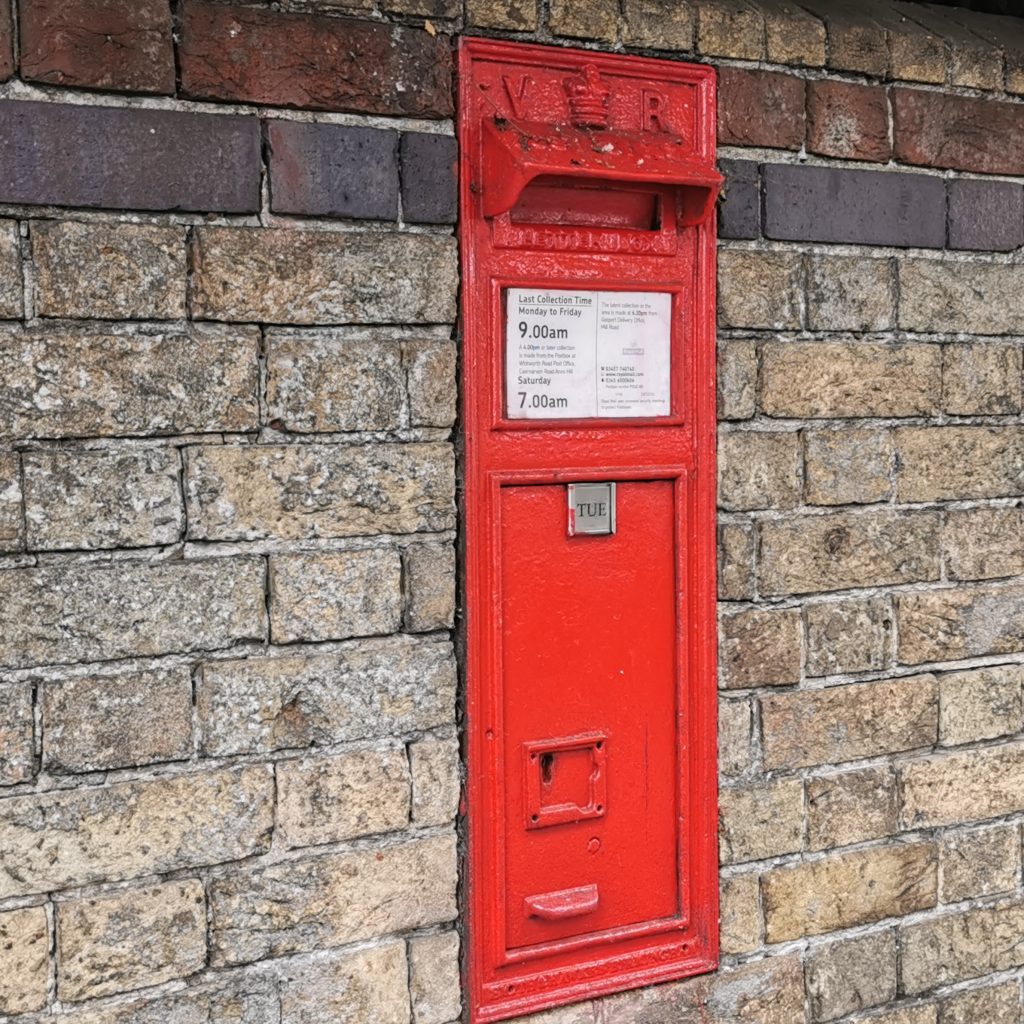
This box dates from the period 1861 to 1871 and was cast by Smith and Hawkes in Birmingham. Known as Box No.2 small, it is known generically as a Wall Box as it was designed to be fitted into a wall, although examples can be found in brick piers.
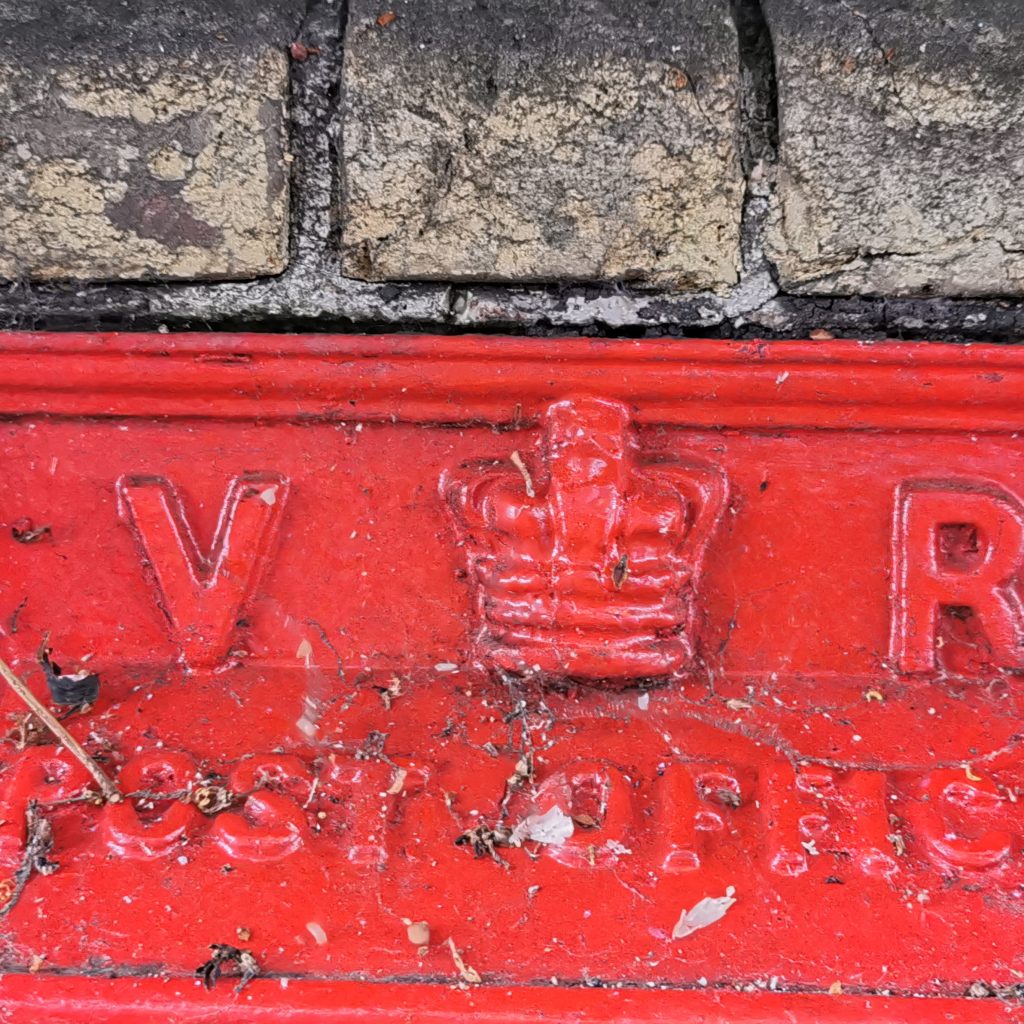 The monarch’s cipher is that of Queen Victoria.
The monarch’s cipher is that of Queen Victoria.
 A small flap is provided in the posting aperture to keep rain out.
A small flap is provided in the posting aperture to keep rain out.
The metal collection tablet holder is a much later addition to the box.
Continuing along Bury Road into Stoke Road we cross by the White Hart and then our next box can be found outside the Stoke Chippy.
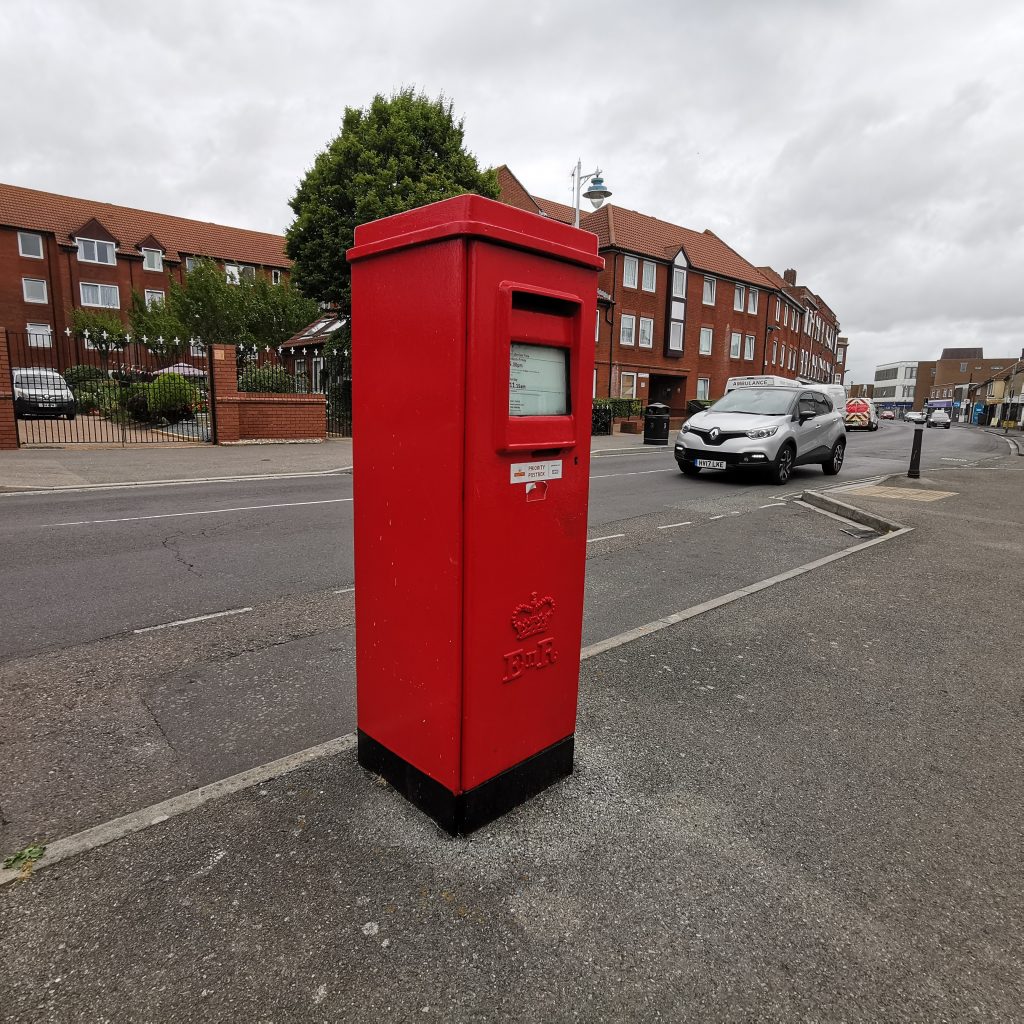 Here we see a Pillar G box made between 1974 and 1981 by the Carron Company of Falkirk. After the perceived failure of the sheet steel Pillar F (salt air and dogs corroded them badly) the Type G was designed.
Here we see a Pillar G box made between 1974 and 1981 by the Carron Company of Falkirk. After the perceived failure of the sheet steel Pillar F (salt air and dogs corroded them badly) the Type G was designed.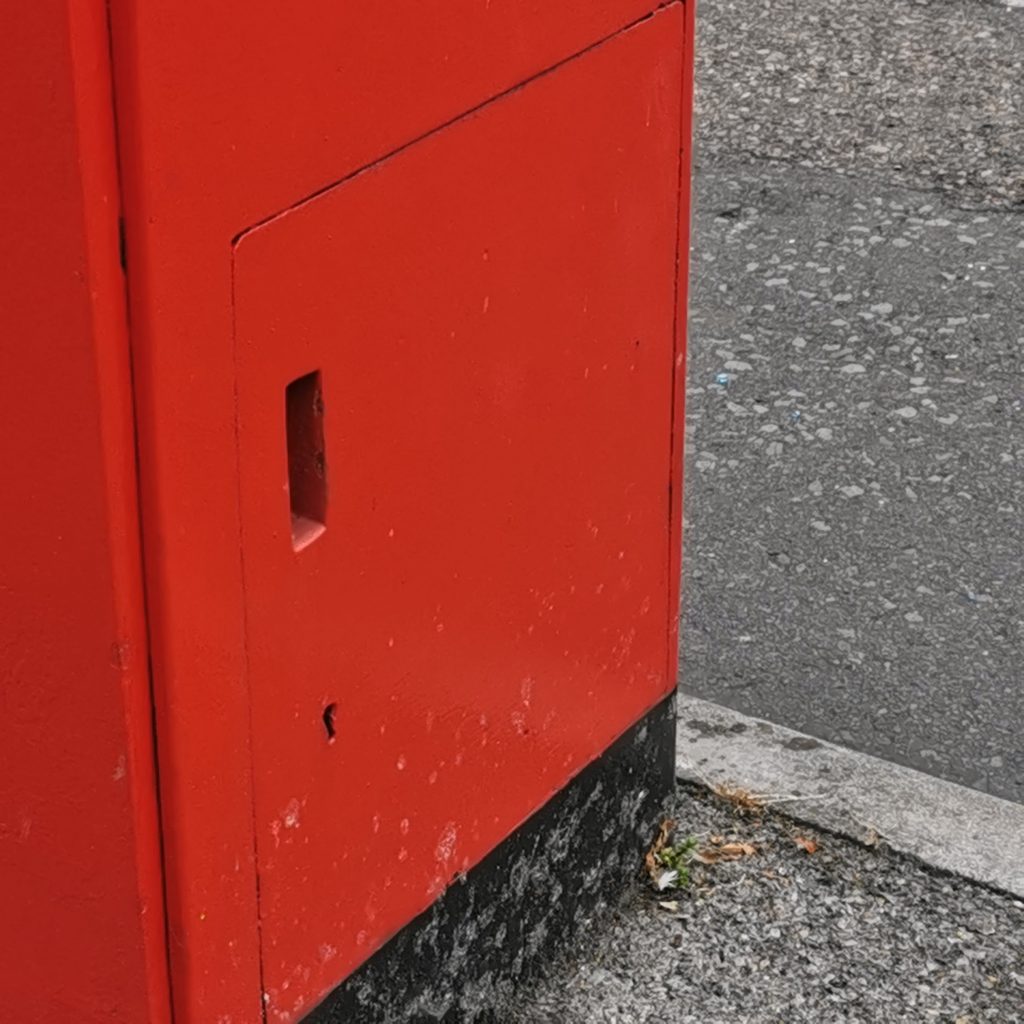 It had an integral section to take a postman’s delivery pouch which would be removed when needed on that section of the delivery round.
It had an integral section to take a postman’s delivery pouch which would be removed when needed on that section of the delivery round.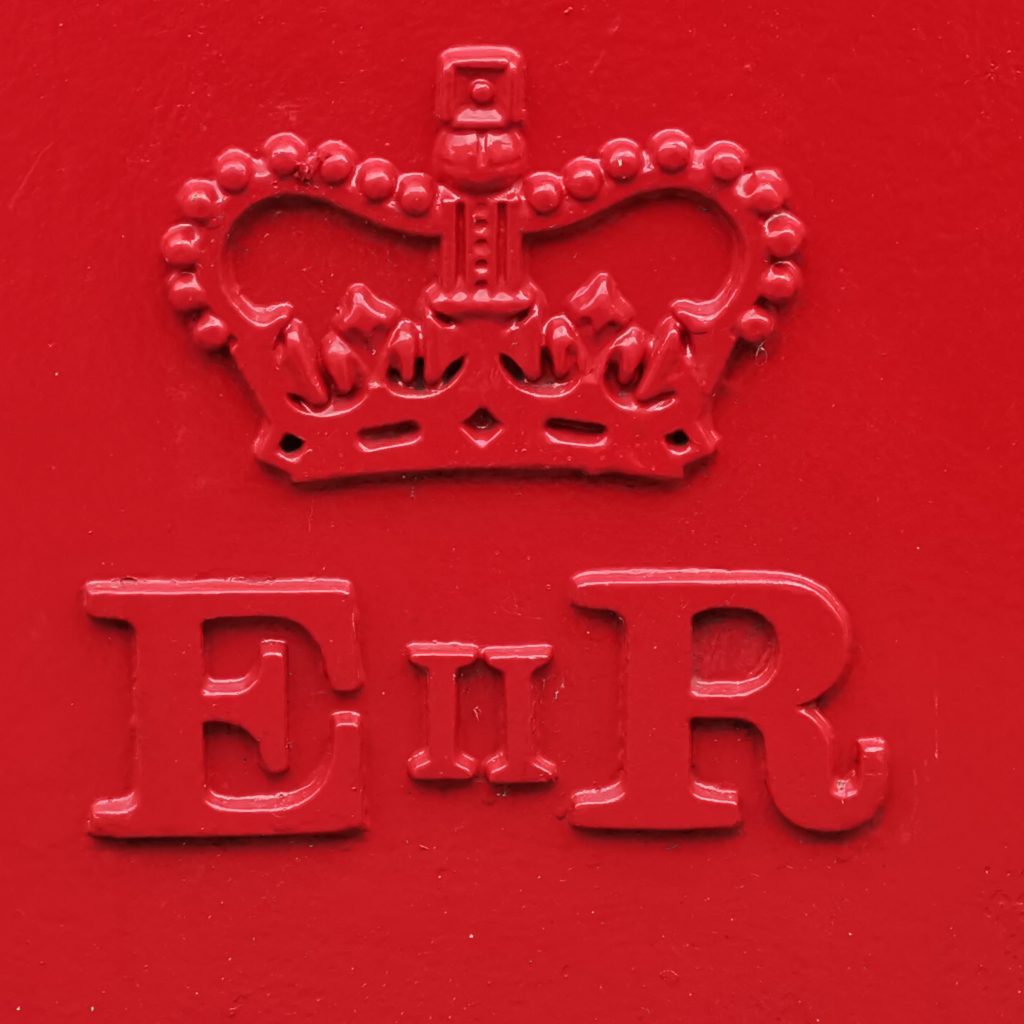 These could be found in pairs with a common cap, the nearest being at Stubbington Post Office.
These could be found in pairs with a common cap, the nearest being at Stubbington Post Office.
Carrying on along Stoke Road and crossing over to the other side we come to the corner of Prince of Wales Road
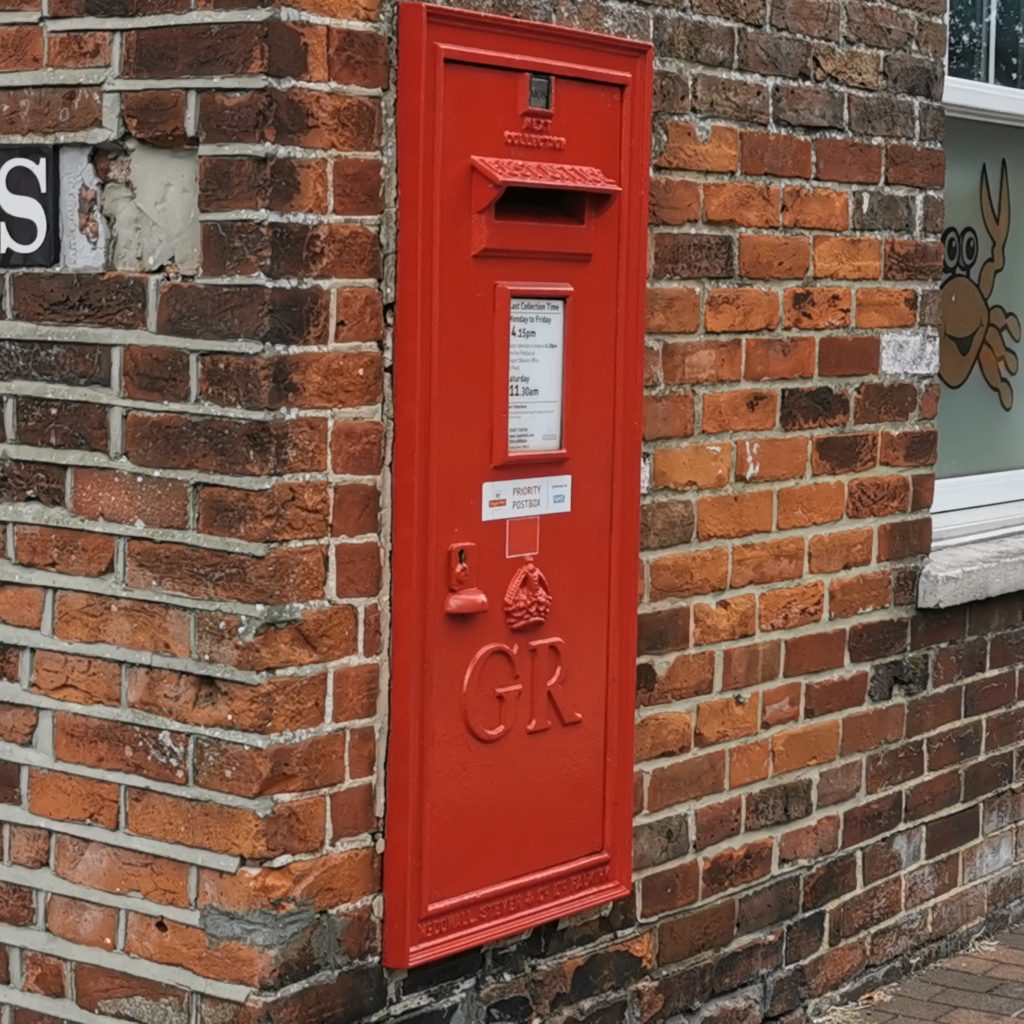 The largest of the wall boxes, this is a Wall A box manufactured by McDowall, Steven & Co of Falkirk.
The largest of the wall boxes, this is a Wall A box manufactured by McDowall, Steven & Co of Falkirk. A very large box designed for high volumes of mail and made between the period 1932 to 1937, we can date this one to 1932 to 1936 as it has a four-inch-high crown. Later versions had a five-inch-high crown.
A very large box designed for high volumes of mail and made between the period 1932 to 1937, we can date this one to 1932 to 1936 as it has a four-inch-high crown. Later versions had a five-inch-high crown.
We continue on to the High Street to the site of the Old Post Office opposite the Travel Lodge
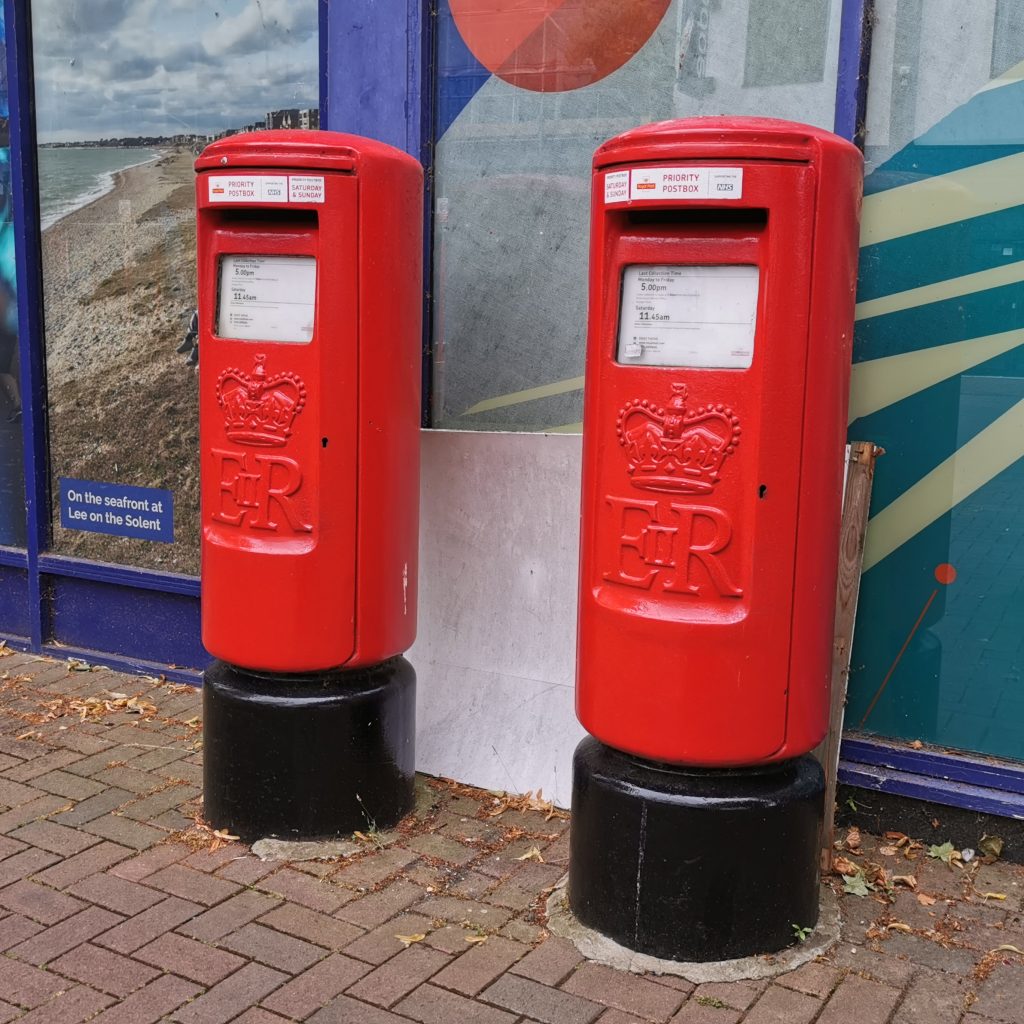 For locations with large volumes of mail it’s quite common practice to site a pair of letter boxes.
For locations with large volumes of mail it’s quite common practice to site a pair of letter boxes.
At this location we see a pair of Pillar K boxes. Designed in 1977 by an industrial designer, Tony Gibbs, it was the first pillar box to be produced to metric dimensions. First appearing in 1979 the initial 14 had commemorative plaques on the rear.
Produced by five different manufacturers over 22 years these date from the period 1988 to 2001 and were made by Machan Engineering.
Continue along the High Street and at the end our next box can be seen to the left by the Castle Tavern. For safety we recommend that you use the pedestrian crossing and make your way round to the post box by way of the Falkland Gardens.
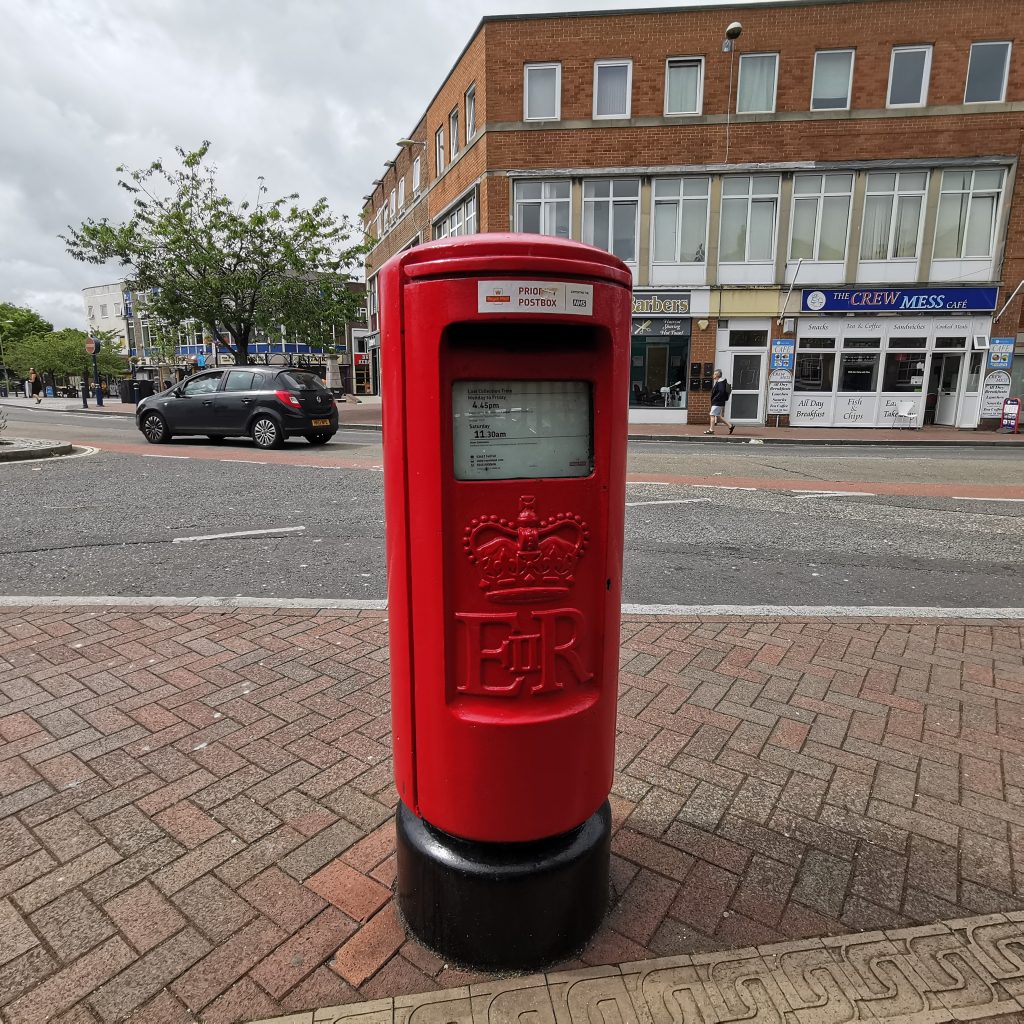 This is another example of the Tony Gibb’s designed Pillar K made by Machan Engineering between 1988 to 2001. It blends well with its surroundings.
This is another example of the Tony Gibb’s designed Pillar K made by Machan Engineering between 1988 to 2001. It blends well with its surroundings.
From here continue to stay on this side of the road and follow Mumby Road until you reach St George Barracks.
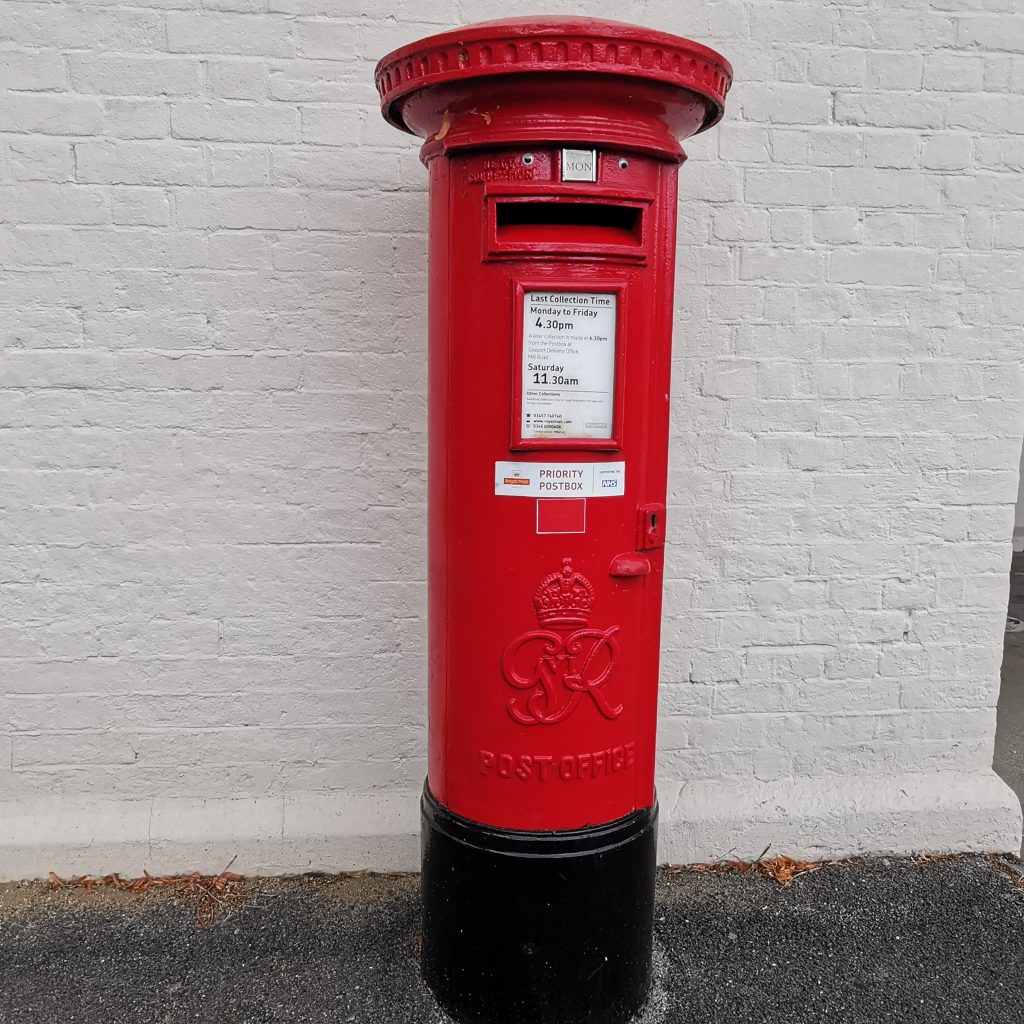 One of the most prolific pillar boxes is the middle-sized Pillar B, produced from 1879 until 1980, the overall design changed little after 1905. This box was made in the period 1937 to 1939, and 1946 to 1949, by the renowned iron founders Carron Company of Stirlingshire.
One of the most prolific pillar boxes is the middle-sized Pillar B, produced from 1879 until 1980, the overall design changed little after 1905. This box was made in the period 1937 to 1939, and 1946 to 1949, by the renowned iron founders Carron Company of Stirlingshire.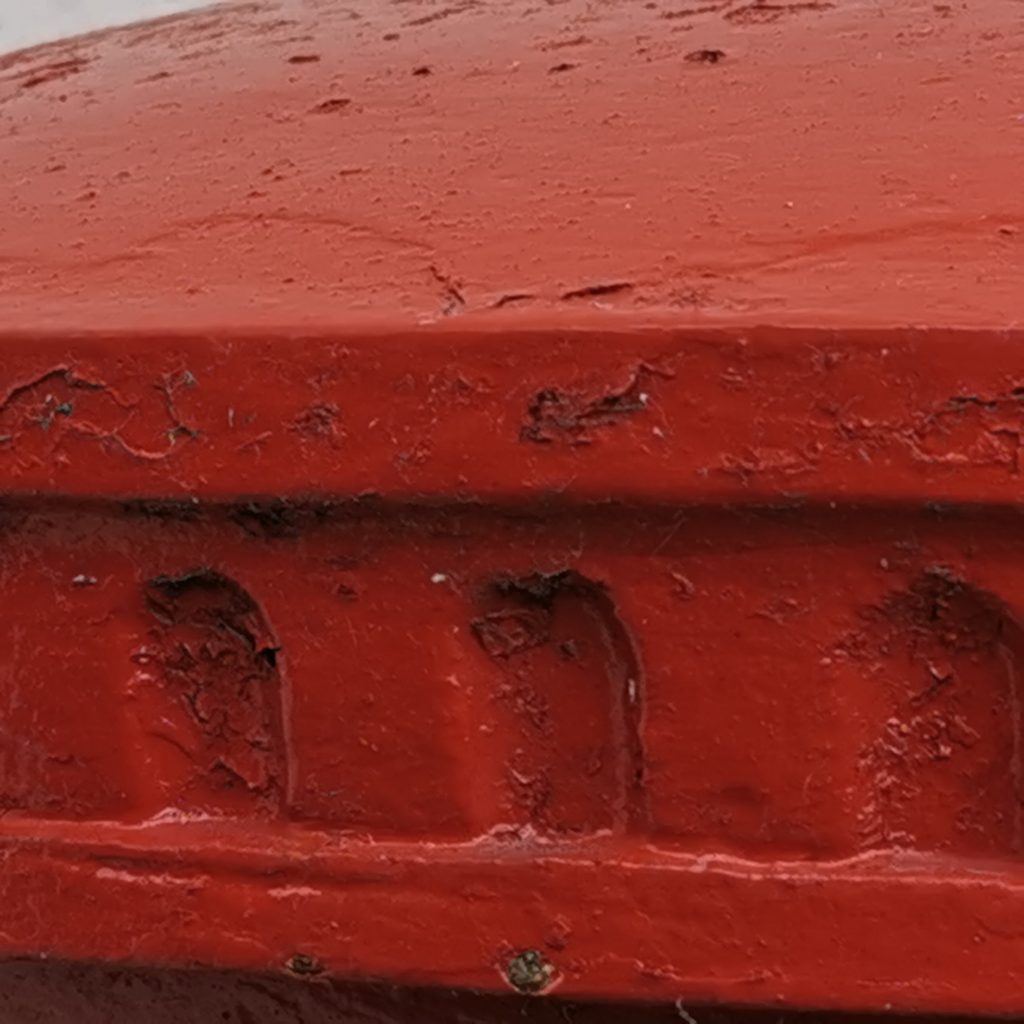 Manufacture of letter boxes was suspended between 1939 and 1946 on account of the Second World War.
Manufacture of letter boxes was suspended between 1939 and 1946 on account of the Second World War.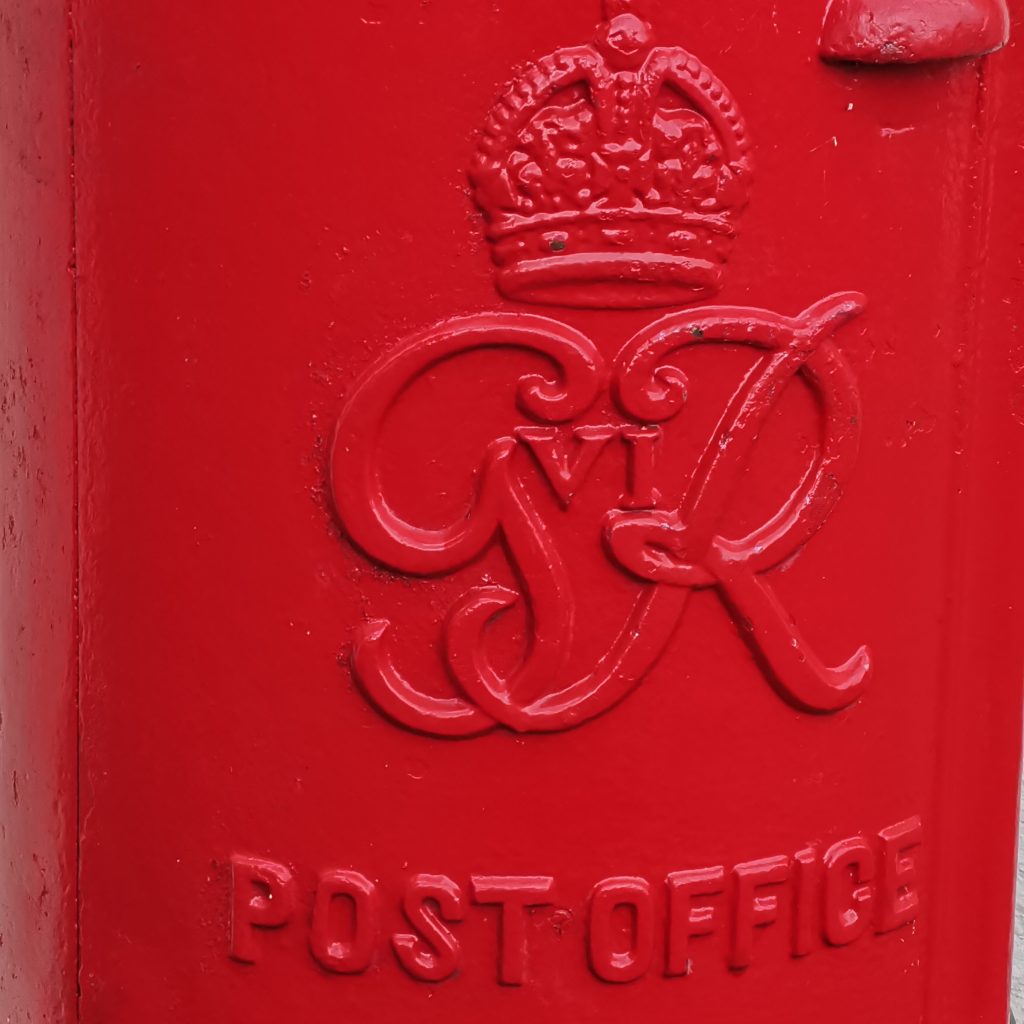 Innumerable soldiers’ letters would have been posted in this box.
Innumerable soldiers’ letters would have been posted in this box.
Cross the road at the pedestrian crossing and continue along Mumby Road to Spring Garden Lane where we cross over to The Old Railway Station for our final box.
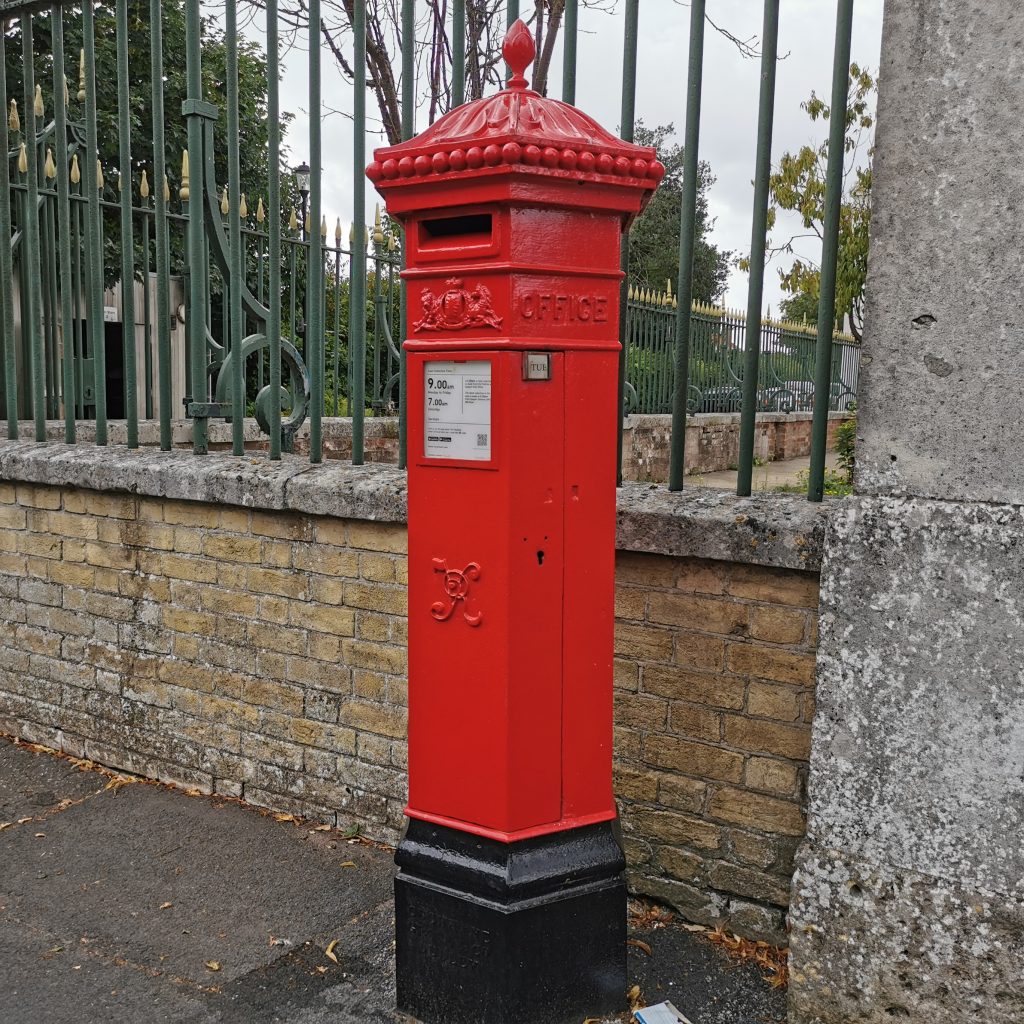 This is a Penfold, probably the best known and most loved post boxes. The unusual hexagonal box is named after it’s designer James Wornham Penfold who practised in London but lived in Haslemere, Surrey. These boxes were produced between 1866 and 1878. This box dates from 1872.
This is a Penfold, probably the best known and most loved post boxes. The unusual hexagonal box is named after it’s designer James Wornham Penfold who practised in London but lived in Haslemere, Surrey. These boxes were produced between 1866 and 1878. This box dates from 1872.
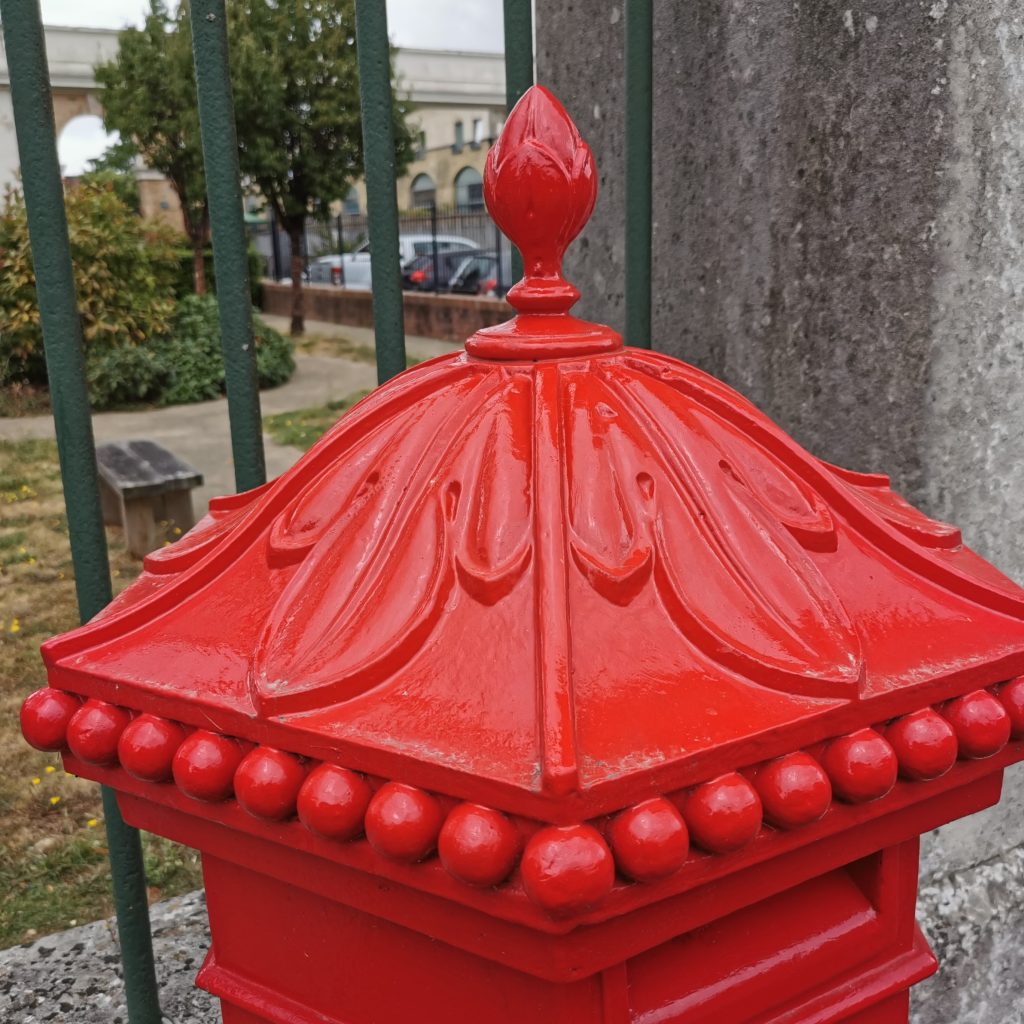 An interesting design feature is the blob above the cap. This is in fact a representation of an acanthus bud and the feature surmounts the cap where will be seen the representation of acanthus leaves on the cap.
An interesting design feature is the blob above the cap. This is in fact a representation of an acanthus bud and the feature surmounts the cap where will be seen the representation of acanthus leaves on the cap.
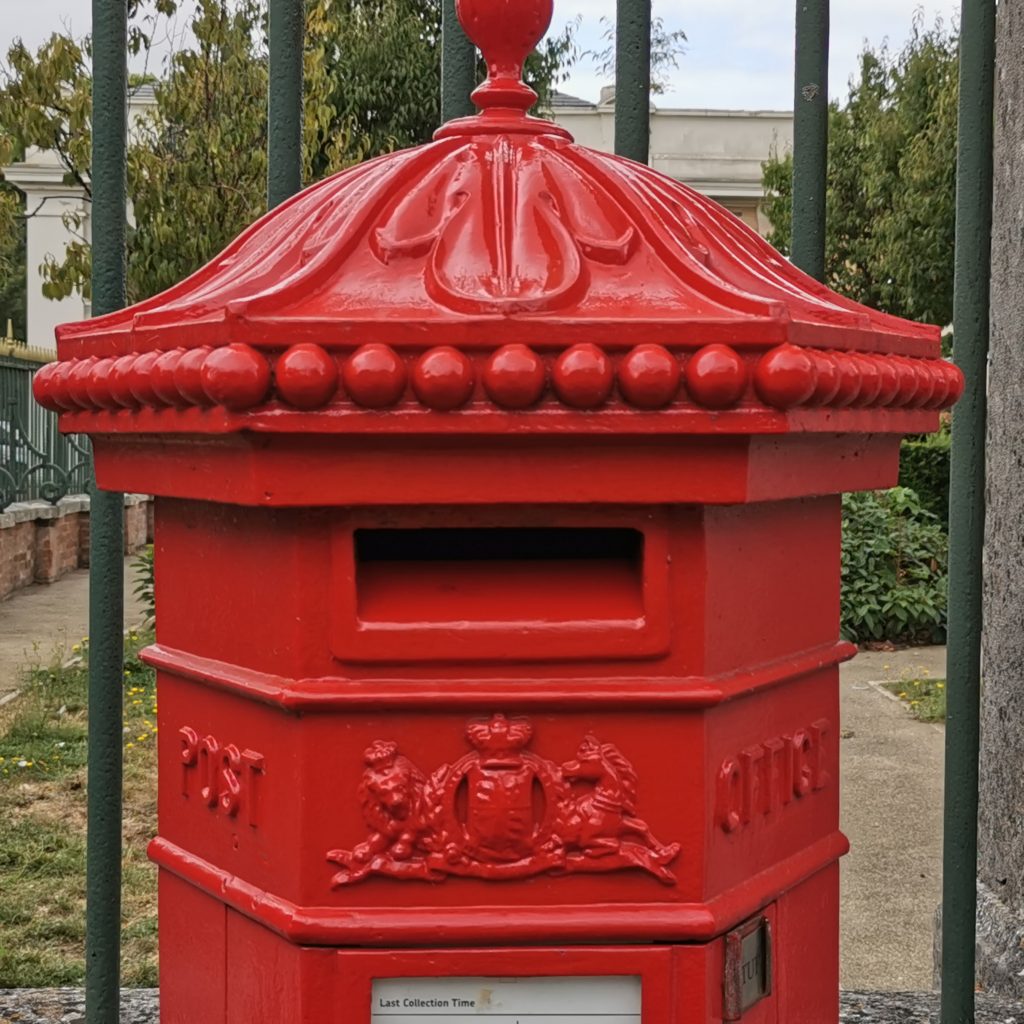 Note also the balls around the edge of the cap, these number 9 or 10 per section according to the box size.
Note also the balls around the edge of the cap, these number 9 or 10 per section according to the box size.
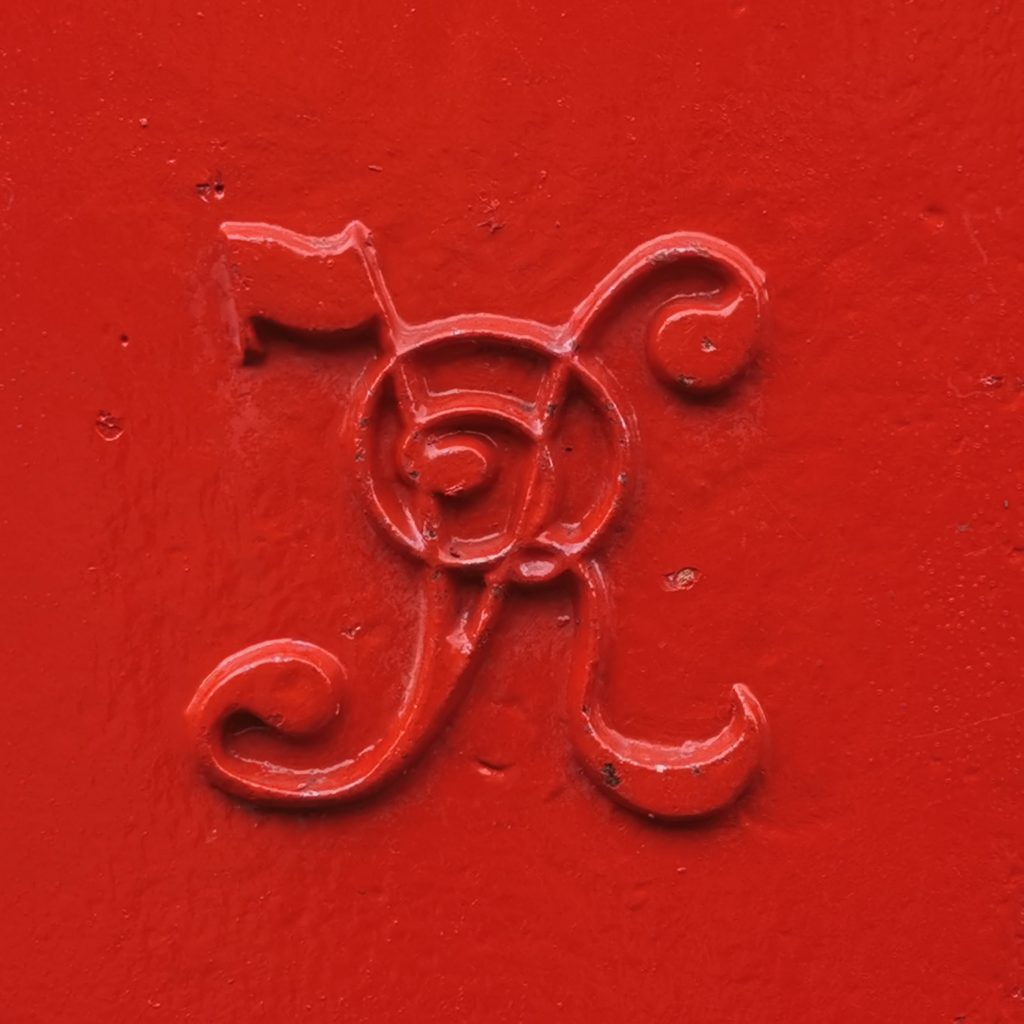 This box bears the insignia of Queen Victoria.
This box bears the insignia of Queen Victoria.
That is the end of our tour. We hope you enjoyed it.
Many thanks to Paul Snelling
Vice chairman of the Letter Box Study Group and Chairman of the Post Box Working Group
